Understanding Software as a Medical Device (SaMD)
In the rapidly evolving field of medical technology, Software as a Medical Device (SaMD) has emerged as a significant and transformative category. SaMD refers to software intended for medical purposes that perform these purposes without being part of a hardware medical device. The rise of digital health and advanced computing capabilities has expanded the potential applications and importance of SaMD. This blog post will explore what SaMD is, its regulatory framework, benefits, challenges, and future trends.
What is SaMD?
SaMD, as defined by the International Medical Device Regulators Forum (IMDRF), is software intended to be used for one or more medical purposes that perform these purposes without being part of a hardware medical device. SaMD can include mobile apps, cloud-based software, and other digital solutions designed to diagnose, prevent, monitor, treat, or alleviate disease.
Examples of SaMD include:
- Mobile apps that analyze medical images to detect abnormalities.
- Software that monitors and predicts patient conditions based on data from wearable devices.
- Decision support tools that provide healthcare professionals with clinical recommendations based on patient data.
Regulatory Framework for SaMD
The regulation of SaMD is crucial to ensure its safety, effectiveness, and reliability. Different regulatory bodies have developed frameworks to address the unique challenges posed by SaMD.
1. FDA (United States)
The U.S. Food and Drug Administration (FDA) regulates SaMD under its medical device framework. Depending on the risk level, SaMD may fall under different regulatory pathways:
- Class I: Low-risk devices, subject to general controls.
- Class II: Moderate-risk devices, requiring special controls and premarket notification (510(k)).
- Class III: High-risk devices, requiring premarket approval (PMA).
The FDA has also introduced the Digital Health Software Precertification (Pre-Cert) Program, which aims to create a more streamlined and efficient regulatory approach for software-based medical devices.
2. EU MDR
In the European Union, SaMD is regulated under the Medical Device Regulation (MDR). The MDR classifies SaMD based on its intended purpose and the potential risk to patients. SaMD manufacturers must undergo a conformity assessment process and obtain CE marking before marketing their products in the EU.
3. IMDRF
The IMDRF has provided guidance on the principles of SaMD, focusing on harmonizing the regulatory approach across different jurisdictions. This includes defining SaMD, establishing quality management systems, and emphasizing the importance of clinical evaluation and risk management.
Benefits of SaMD
SaMD offers numerous benefits that enhance patient care and healthcare delivery:
- Accessibility: SaMD can be accessed remotely, providing healthcare services to patients in underserved or remote areas.
- Personalization: SaMD allows for personalized medicine by analyzing individual patient data to tailor treatments and interventions.
- Real-Time Monitoring: Continuous monitoring of patient health through SaMD enables timely interventions and reduces the risk of complications.
- Cost-Effectiveness: SaMD can reduce healthcare costs by improving efficiency, reducing hospital admissions, and enabling preventive care.
- Innovation: The rapid development and deployment of SaMD foster innovation in diagnostics, treatment, and patient management.
Challenges of SaMD
Despite its benefits, SaMD also presents several challenges:
- Regulatory Compliance: Navigating the complex and evolving regulatory landscape can be challenging for SaMD developers.
- Cybersecurity: Protecting patient data and ensuring the security of SaMD is critical, given the increasing threat of cyberattacks.
- Interoperability: Ensuring that SaMD can integrate seamlessly with other healthcare systems and devices is essential for its effective use.
- Clinical Validation: Demonstrating the safety and effectiveness of SaMD through rigorous clinical evaluation is necessary but can be resource-intensive.
- User Adoption: Encouraging healthcare providers and patients to adopt and trust SaMD requires education and evidence of its benefits.
Future Trends in SaMD
The future of SaMD looks promising, with several emerging trends poised to shape its development and application:
1. Artificial Intelligence and Machine Learning (AI/ML)
AI and ML are revolutionizing SaMD by enabling advanced data analysis, predictive analytics, and decision support. These technologies can enhance diagnostic accuracy, personalize treatment plans, and improve patient outcomes. Regulatory bodies are working to establish frameworks for the safe and effective use of AI/ML in SaMD.
2. Telemedicine Integration
The integration of SaMD with telemedicine platforms is expanding access to healthcare and enabling remote patient monitoring and consultations. This trend has been accelerated by the COVID-19 pandemic, highlighting the need for robust digital health solutions.
3. Cloud-Based Solutions
Cloud computing provides scalable and flexible infrastructure for SaMD, allowing for real-time data processing, storage, and analysis. Cloud-based SaMD can support large-scale deployments and facilitate collaboration among healthcare providers.
4. Patient-Centered Design
Future SaMD development is increasingly focusing on patient-centered design principles, ensuring that software is intuitive, user-friendly, and addresses patient needs. Engaging patients in the design process can improve usability and adherence.
5. Enhanced Data Security
As the volume of health data grows, enhancing data security and privacy is paramount. SaMD developers are investing in advanced cybersecurity measures and compliance with data protection regulations such as GDPR and HIPAA.
6. Regulatory Evolution
Regulatory bodies are continuously evolving their frameworks to keep pace with technological advancements in SaMD. Collaborative efforts among international regulators aim to harmonize standards and facilitate global market access for SaMD developers.
Software as a Medical Device (SaMD) represents a significant advancement in the healthcare industry, offering innovative solutions for diagnosis, treatment, and patient management. Understanding the regulatory landscape, benefits, challenges, and future trends of SaMD is essential for stakeholders involved in its development and deployment.
As SaMD continues to evolve, collaboration among regulators, developers, healthcare providers, and patients will be crucial to harness its full potential. By addressing the challenges and embracing emerging trends, SaMD can transform healthcare delivery, improve patient outcomes, and pave the way for a more connected and efficient healthcare ecosystem.
